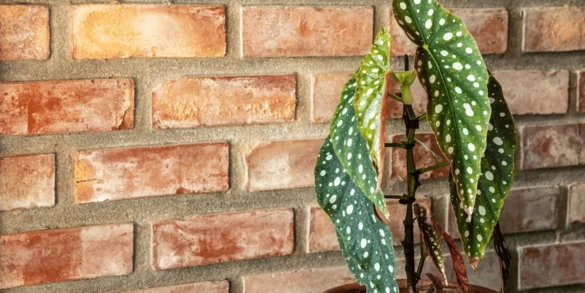Introduction to Begonia Mallacoota
If you’re seeking a stunning addition to your indoor or outdoor garden, look no further than the begonia mallacoota. With its vibrant leaves and unique patterns, this plant not only enhances aesthetics but also brings a touch of nature into your space. Whether you’re a seasoned gardener or just starting out, caring for the begonia mallacoota is both rewarding and enjoyable. From selecting the perfect spot for sunlight to understanding watering needs, let’s explore everything you need to know about nurturing this beautiful plant so it thrives in your care. Get ready to transform your gardening experience with the lush charm of begonia mallacoota!
Choosing the Right Location for Your Begonia Mallacoota
Finding the perfect spot for your begonia mallacoota is crucial to its health. These plants thrive in bright but indirect light. Too much direct sunlight can scorch their leaves, so consider placing them near a window with filtered light.
Temperature plays a significant role as well. Aim for a warm environment; temperatures between 65°F and 75°F are ideal. Avoid cold drafts or sudden temperature changes that could stress the plant.
Humidity is another key factor. Begonias love moisture! If you live in a dry climate, try using a humidity tray or misting the leaves occasionally to keep things comfortable.
Ensure good air circulation around your begonia mallacoota. This helps prevent mold and pests from taking hold, keeping your plant healthy and happy. Finding that sweet spot will make all the difference in nurturing this beautiful addition to your home garden.
Watering and Fertilizing Your Begonia Mallacoota
Watering your Begonia Mallacoota is crucial for its health. These plants prefer a balance—neither too dry nor waterlogged. Check the top inch of soil; if it feels dry, it’s time to water.
Use room temperature water to avoid shocking the roots. Ensure that excess moisture can drain away freely, as standing water can lead to root rot.
Fertilizing should not be overlooked either. During the growing season, a diluted liquid fertilizer every four weeks will keep your begonia thriving. Choose a balanced formula designed for houseplants.
In autumn and winter, reduce feeding significantly as growth slows down. This helps prevent over-fertilization during dormancy while still providing essential nutrients when needed most.
Remember, each plant may have unique needs based on its environment and climate conditions. Keep an eye on how yours responds throughout different seasons for optimal care.
Pruning and Propagating Tips
Pruning your Begonia Mallacoota is essential for maintaining its lush appearance. Use sharp, clean scissors to trim away any dead or yellowing leaves. This encourages new growth and keeps the plant healthy.
Focus on shaping the plant as well. Regularly removing leggy stems helps promote a bushier look. Aim for balance in your pruning; it’s not just about cutting back but also giving it room to flourish.
Propagation can be equally rewarding. You can easily propagate this begonia through leaf cuttings or stem sections. Select a healthy leaf and cut it into wedges, making sure each piece has a vein.
Place these cuttings in moist potting mix and cover them lightly with soil. Keep them warm and humid until you see roots developing, which usually takes a few weeks of patience before transplanting them into their own pots.
Common Pests and Diseases of Begonia Mallacoota
Begonia Mallacoota can be susceptible to a few common pests and diseases. Aphids are one of the main culprits, often hiding on the undersides of leaves. These tiny insects feed on sap, causing wilting and yellowing.
Mealybugs can also invade your plant, appearing like small cottony masses. They weaken the plant by sucking nutrients and may lead to stunted growth if not controlled.
Fungal infections such as powdery mildew thrive in humid conditions. You’ll notice a white, dusty coating on leaves when this occurs. It’s best to ensure good air circulation around your begonia.
Root rot is another concern that arises from overwatering or poorly draining soil. Keep an eye out for soft stems and wilted foliage—these could indicate trouble below the surface. Regular monitoring will help you catch these issues early before they escalate into bigger problems.
Winter Care for Your Begonia Mallacoota
As winter approaches, your Begonia Mallacoota needs a little extra care. These beautiful plants thrive in warmer conditions, so protecting them from the cold is essential.
First, consider relocating your begonia indoors if you live in an area that experiences frost. A bright spot near a window with filtered sunlight will help keep it healthy.
If you prefer to leave it outside, create some insulation by mulching around the base of the plant. This helps retain heat and moisture during chilly nights.
Adjust your watering routine too. With reduced light and cooler temperatures, Begonia Mallacoota requires less water. Ensure the soil remains slightly moist but never soggy to prevent root rot.
Fertilization can also take a backseat during winter months—stop feeding altogether until spring arrives when growth resumes again.
Conclusion: Enjoy the Beauty of Your Begonia Mallacoota
Caring for your Begonia Mallacoota can be a rewarding experience. With its vibrant colors and lush foliage, this plant adds charm to any space. By providing the right location, proper watering and fertilizing, regular pruning, and vigilance against pests, you’ll ensure your begonia thrives.
Remember to consider seasonal changes as well. Winter care is essential for maintaining the health of your plant during colder months. Whether you’re a novice or have some gardening experience under your belt, caring for a Begonia Mallacoota doesn’t have to be daunting.
Embrace the beauty of this unique plant by giving it the attention it deserves. Watching it grow and flourish will bring joy to your home or garden throughout the seasons. Enjoy every moment with your Begonia Mallacoota!

